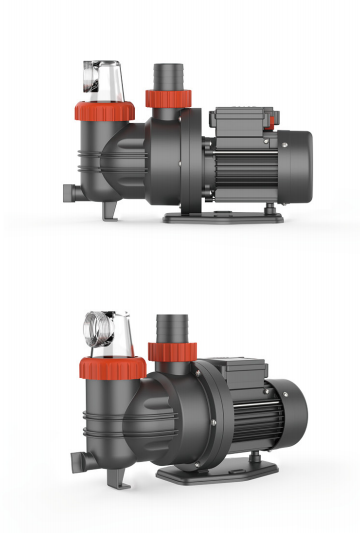Core Technologies and Integration Solutions for Solar Water Pumping Systems
•
Core Technologies and Integration Solutions for Solar Water Pumping Systems
How can solar water pumping systems deliver maximum efficiency and reliability in off-grid applications? The answer lies in mastering core technologies that optimize power matching, controller functionality, and pump selection.
Solar water pumping systems leverage optimized power matching between PV modules and pumps, advanced controller technologies, and suitable pump types (centrifugal/screw) to achieve reliable, energy-efficient water delivery in off-grid scenarios.
Solar water pumping has transformed agriculture and drinking water access in remote areas. But to harness its full potential, understanding technical nuances—from photovoltaic (PV) sizing to dynamic pump control—is critical. Let’s explore these components systematically.
Analysis of Key Parameters for Power Matching between PV Modules and Pumps
Ever struggled with a solar pump system that underperforms despite ample sunlight? The culprit is often mismatched components.
Power matching between PV modules and pumps hinges on aligning voltage-current curves, accounting for hydraulic load, and ensuring MPPT (Maximum Power Point Tracking) compatibility to maximize energy harvest and pump efficiency under variable solar conditions.
Critical Parameters for Power Matching
-
Voltage-Current Alignment
- PV modules must operate near the pump’s rated voltage to avoid energy loss.
- Example: A 24V pump requires a PV array configured to deliver ~30V (accounting for voltage drop).
-
Hydraulic Load Considerations Pump Type Optimal Head (m) Flow Rate (m³/day) Centrifugal 10–50 20–100 Positive Displacement 50–200 5–20 -
MPPT Integration
- MPPT controllers adjust electrical parameters dynamically, improving efficiency by 20–30% compared to PWM controllers.
Pro Tip: Oversize the PV array by 15–20% to compensate for cloudy days and ensure consistent pump operation.
Working Principle and Optimisation Strategies of Solar Water Pump Controllers
Why do some solar pumps fail during intermittent sunlight while others thrive? The controller is the unsung hero.
Solar pump controllers optimize energy transfer by integrating MPPT algorithms, soft-start capabilities, and dry-run protection, ensuring efficient pump operation and longevity even under fluctuating solar irradiance.
Optimisation Techniques
-
MPPT Algorithms
- Perturb-and-observe (P&O) or incremental conductance (INC) methods maximize power extraction.
-
Protection Mechanisms
- Dry-run protection halts the pump during low water levels, preventing motor burnout.
-
Variable Frequency Drives (VFDs)
- Adjust pump speed to match solar input, reducing energy waste.
Case Study: A 5HP solar pump in Rajasthan saw a 25% efficiency boost after upgrading to an MPPT+VFD controller.
Study on the Suitability of Different Pump Types (Centrifugal Pumps, Screw Pumps, etc.) for Use in Solar Systems
Which pump type excels in low-irradiance conditions? The answer depends on your water-lifting needs.
Centrifugal pumps suit high-flow, low-head applications (e.g., irrigation), while positive-displacement pumps (screw/piston) are ideal for high-head, low-flow scenarios (e.g., deep wells), with efficiency varying based on solar input consistency.
Pump Performance Comparison
| Parameter | Centrifugal | Screw Pump |
|---|---|---|
| Best For | Shallow wells (<50m) | Deep wells (>100m) |
| Efficiency @ Low Sun | Poor (needs high RPM) | High (works at low RPM) |
| Maintenance | Low | Moderate |
Key Insight: Screw pumps tolerate voltage fluctuations better, making them robust for off-grid solar setups.
Conclusion
Solar water pumping systems demand meticulous integration of PV arrays, intelligent controllers, and purpose-built pumps to balance efficiency, cost, and reliability—turning sunlight into sustainable water access.





